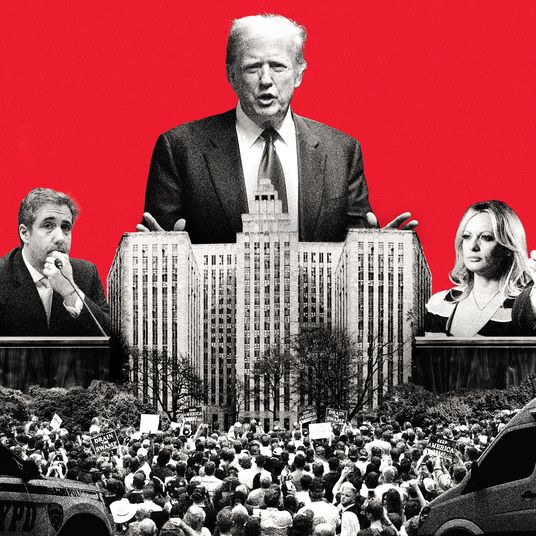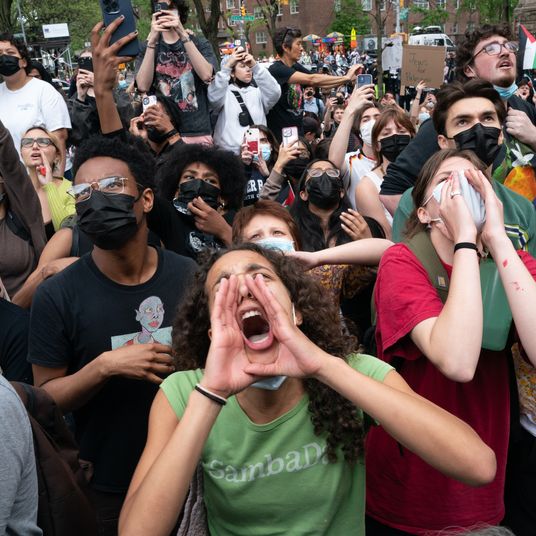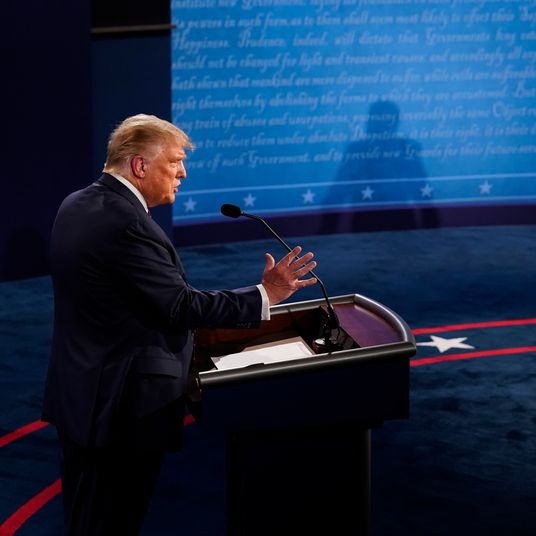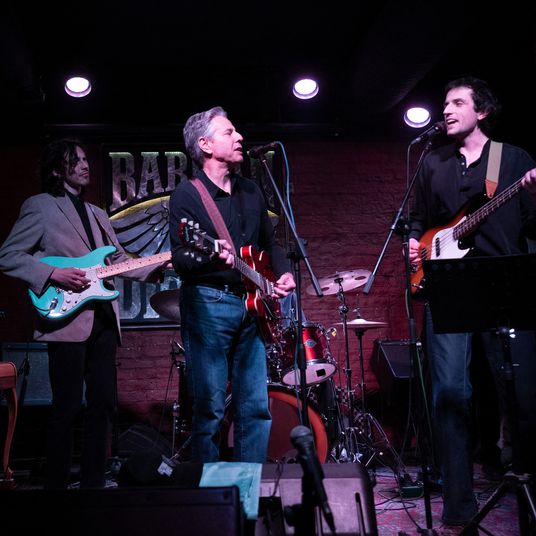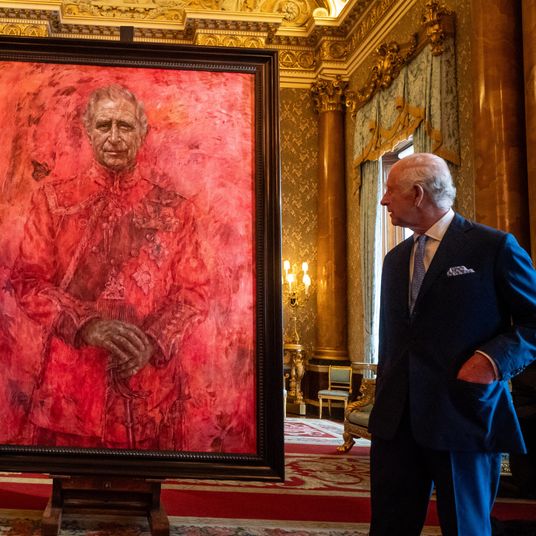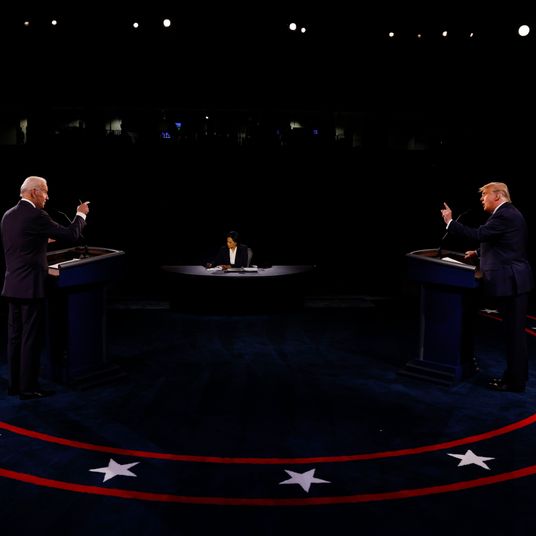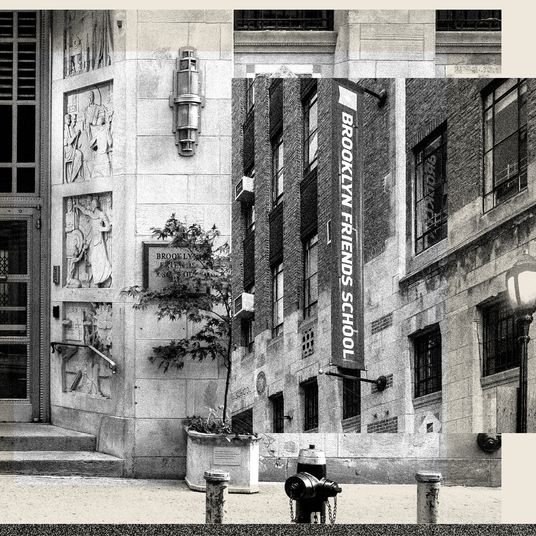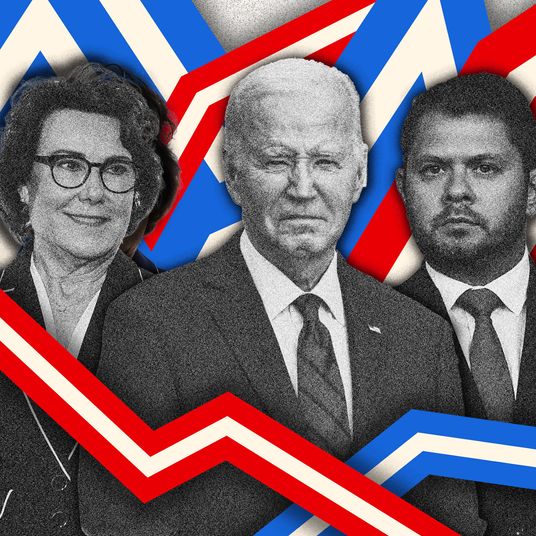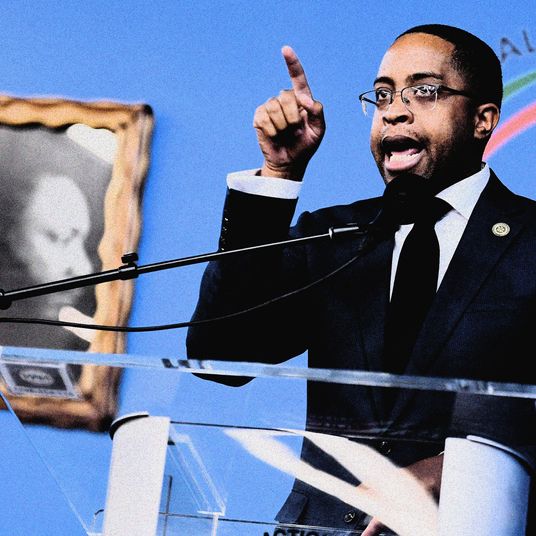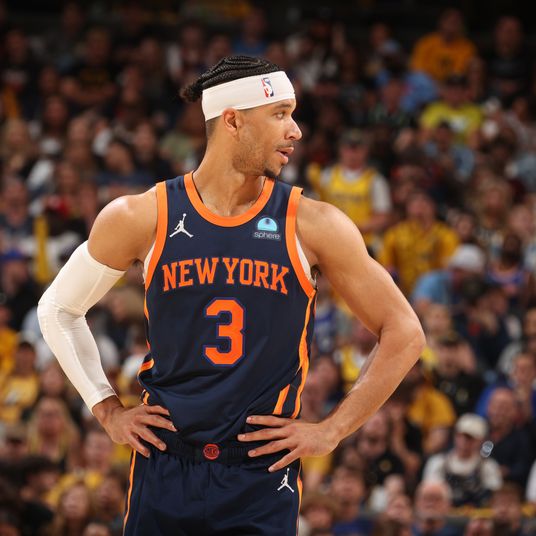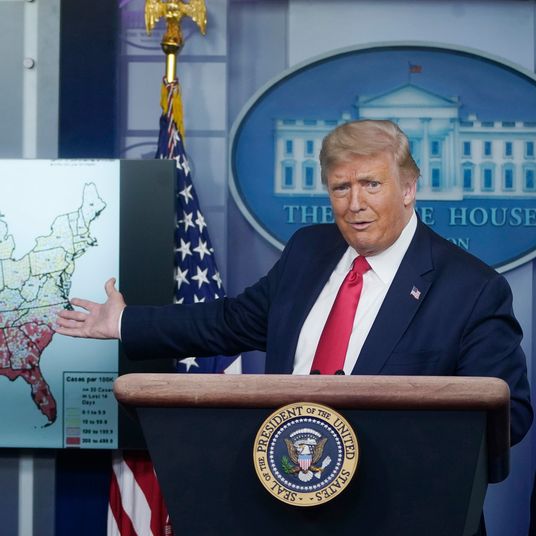
For the past two decades, young people were widely assumed to have an ironclad loyalty to the Democratic Party. Democrats believed this, as did Republicans and journalists. So deeply ingrained was this belief that when polls began to show President Biden losing to Donald Trump in the 2024 race, critics sometimes disregarded them on the grounds that these surveys showed young people favoring Trump — a result nobody could accept.
When a Washington Post–ABC News poll in September found a ten-point Trump lead, for example, analyst G. Elliott Morris dismissed it as an outlier in part because it showed voters between the ages of 18 and 29 favoring Trump over Biden 48-to-41 percent. Morris noted that an ABC News exit poll from the 2020 election showed Biden winning that group by 24 points, which would mean a 31-point swing toward Trump in the past few years — “more than twice as much as the overall population shifted.”
Morris conceded it was possible “if young people and people of color are dissatisfied with the progress Biden has made or upset that he is running for reelection, they could be withholding their support for him in polls as a way to register their displeasure with the situation. Ultimately, however, they may vote for him anyway.” In other words, young voters might say they are voting for Trump because they are upset Biden isn’t liberal enough. But they couldn’t really mean it. Right?
It seems, alas, that they do. A New York Times poll published in December is the latest to find Trump leading Biden among young voters. The unthinkable has become, at least for the time being, undeniable.
The reverberations from this change run even deeper than the obviously profound implications for the presidential race and the future of American democracy. The progressive movement made a giant bet on mobilizing young voters. That strategy, invested with buoyant hopes and vast sums of money, is now in ruins.
Two decades ago, demographer Ruy Teixeira and journalist John B. Judis wrote The Emerging Democratic Majority, which posited educated professionals were defecting from the Republican Party to join with the Democrats’ base of racial minorities, union members, and the poor. After Barack Obama’s two election victories, the prophecy seemed to be at hand: a potential coalition with greater numbers than the GOP’s dwindling core of older white voters.
In this new world, the Democrats’ task was to actualize their emerging majority by bringing young voters — heavily nonwhite and presumed to be progressive — to the polls. Republicans believed the same thing, which is why they responded to Obama’s elections by obsessively closing down polling locations, reducing early voting, requiring voters to jump through bureaucratic hoops to cast a ballot, and enacting other restrictions meant to suppress the youth vote.
Liberal donors poured resources into an endless array of supposed grassroots organizations designed to turn out young, and especially nonwhite, voters. The theory was that these potential voters held left-wing views and would be roused to vote only if they could be convinced Democrats would take firm progressive positions. “Democrats desperately need a bold, progressive agenda and to build the kind of relationships in Florida that can’t be forged overnight,” argued one activist in 2019, echoing what activists were saying in other states.
Activists tended to import the language and concepts of the academic left into their work. “Young people have expressed that true engagement means investing in young people as leaders and amplifying work already being done in their communities, centering social justice and intersectionality, and meeting young people where they are,” wrote one. These, in turn, found their way into the rhetoric of Democratic politicians like Hillary Clinton (“We face a complex set of economic, social, and political challenges. They are intersectional, they are reinforcing, and we have got to take them all on”) and Bernie Sanders (“In order to transform this country into a nation that affirms the value of its people of color, we must address the five central types of violence waged against black, brown and Indigenous Americans: physical, political, legal, economic, and environmental”).
The primary analytic failure in this strategy was a mistaken assumption — an assumption, to be clear, I made — that race would be the determinative factor in future elections. The 2012 presidential election turned out to be the apogee of racial polarization in the electorate with 93 percent of Black voters going for Obama over his rival Mitt Romney. Republicans there-after gained voting share among minority voters — not by moving to the center on immigration and other social issues, as some of them wished to do after Romney’s debacle, but by nominating Trump.
And contrary to the belief that nonwhite voters would anchor the Democratic Party’s progressive wing, they’ve actually anchored its moderate wing. As political analyst Lauren Harper points out, Black Democrats are more likely than white Democrats to identify as moderate or conservative and take more moderate positions than white Democrats on a host of issues: They favor stricter immigration enforcement, prioritizing fossil-fuel production over mitigating climate change, increasing spending on reducing crime, opposing abortion, etc. (Hispanics are generally in the middle: to the left of Black Democrats but to the right of white ones.)
Progressive activist groups have built a business model out of claiming they represent the beliefs of young nonwhite voters and warning Democrats must endorse their positions or risk demoralizing these crucial constituencies. The media has often accepted these claims uncritically. After Biden’s 2022 State of the Union address downplayed climate change and argued for greater law-enforcement resources, the Associated Press concluded his speech “could alienate the coalition of Black people, young people, progressives, and independents” and his call for police funding in particular was “seen by some as a tone-deaf overture to white voters at the expense of millions of Black Americans.”
The danger is not that young voters, massively demoralized by Biden, will merely sit on their hands in 2024. It’s that they will actually vote for Republicans. This dynamic also applies to the latest issue where Biden is bleeding support from young people: the war in Gaza, which has pushed young voters toward Trump. This suggests that, while many young voters have views on the Middle East roughly aligned with the left wing of the Democratic Party rather than its centrist flank, many of those who oppose Israel’s actions in Gaza are also alienated from progressive ideas in general.
Instead of racial polarization, the electorate has increasingly been defined by educational polarization. Democrats have gained college-educated white voters and lost nonwhite voters who lack college degrees. This shift has flipped the traditional assumptions about voter turnout upside-down.
The old model was that Democrats thrived in high-turnout elections, like presidential contests, while doing poorly in low-turnout midterm elections. “Political analysts increasingly talk about two American electorates: the one that picks presidents (and has awarded Democrats the popular vote in five of the past six presidential races) and the one that determines midterms (which have usually favored Republicans since 1994),” wrote commentator Ronald Brownstein in 2014.
That’s all out the window now. In the 2022 midterm elections, as well as in a series of other low-turnout special legislative elections and ballot referenda that tend to attract the most dedicated and organized citizens, Democrats performed shockingly well. But this shouldn’t be a shock at all. The Times finds Biden doing noticeably worse among young voters who didn’t vote in 2020 than among those who did. The new rule is that the fewer people who show up to vote, the better Democrats do. It would be a delicious irony if the GOP’s relentless enforcement of voter-suppression laws ultimately does Trump in. But hoping for low turnout is a thin reed on which to base the salvation of democracy.







